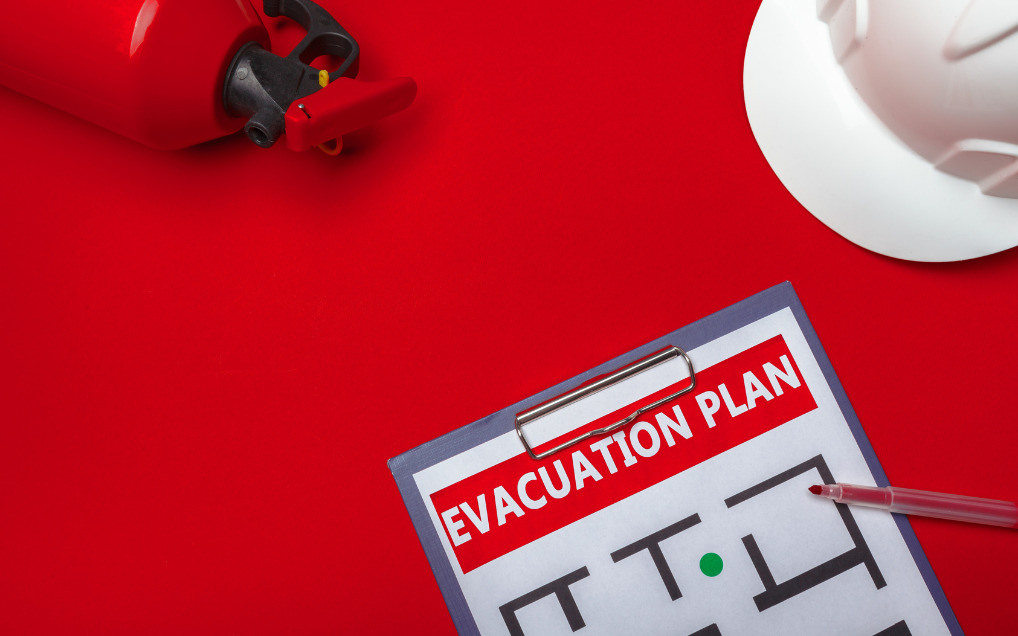So you have a brilliant disaster response procedure document for your business…but it’s gathering dust in a drawer somewhere, never looked at and reviewed.
Unfortunately, that means your plan is next to useless.
In order for your disaster response plan to be effective you must make sure that the plan works, before a disaster. You don’t want to find out that it doesn’t work when you actually need it to.
David Parsons is the director of Crisis Management Australia and supports a range of organisations to achieve excellence in emergency and crisis management. He says: “If you look at, for example, police services, and in the military, a lot of their work is doing simulation training so that people can visualise an event, record their reactions and decisions and then use that video to solve an issue when that similar problem arises in their work.”
He further explains, “When you’re under pressure, how you best solve problems is to use what we call ‘issue recall solutions’. Scenario training helps prevent a situation where you’re standing around wondering what to do in the midst of a crisis.”
Why you should test your disaster response plan
Testing is vital because you want to be as prepared as possible in case anything goes wrong. Testing reveals weaknesses, gaps in resources, and many other opportunities for improvement that might be otherwise overlooked.
The testing process helps to clarify who is responsible for what, reinforces information within a team and reveals any need for additional training.
It also exposes aspects of the disaster plan that don’t pan out in practice so that you can fix it now.
David offers an example of what happens when you don’t test out a disaster response plan: “The US government lost a billion dollar warship because a fire started. They had a fire plan that had been written up. But what they didn’t do was train anyone to step up to lead any decision making in such a scenario and no one had practised what to do in case of fire. So when the fire started, there was no immediate reaction.”
1. Scenario Training
Scenario training is critical for your staff so they know what to do under stress. The more pressure you’re under in a crisis, the less likely you’re going to be able to make creative decisions. So you need to store away the knowledge of how to solve a specific problem
David says: “Let’s say I go into a shop and there’s a blackout. And I got all this stuff to buy. The shop owners say ‘You can’t buy it, our credit card machine’s down.’ Now if they had an old manual credit card machine, and the shop owner knew how to use it, then whenever the next blackout occurs it’s in person’s memory to be recalled as a solution.”
Being a safety-led business means regularly running disaster response scenario exercises in your business and conducting safety and preparedness discussions with your team.
Here are some simple tips on that you and your team can do as part of everyday operations to test a disaster response plan:
- Simulate hypothetical incidents eg a fire drill;
“One business that I work with – every Friday afternoon, they lock the front door so employees aren’t allowed to leave through the front. So every week everyone practises leaving through the fire exits,” explains David. “That means when they do have an event and they can’t use the front door, people’s automatic reaction is that they will go through the fire exit. That’s stored in their physical memory so they’ll be quick to recall and use that information during a stressful situation.” - discussion-based tabletop exercises to discuss roles and responsibilities eg a monthly meeting where you discuss disaster preparedness with your team so that they are aware of potential hazards and the appropriate response. Also use the meeting to make sure that each team member knows their role in the plan and who is the leader/main decision maker.
“Do not only plan for things you can manage. Have discussions around the implausible as well, because what may sound implausible now may actually occur.” - Implement a consistent schedule for systems tests, inspections and maintenance tasks eg checking monthly that your backup generator is working or annually that your fire alarms are operating as required.
“With the increase of cyber-crime, regularly practise for a shutdown of your computer system, for a loss of your databases.” - Have a readily available list of contact information of relevant employees, suppliers and vendors, contractors, public agencies and emergency services organisations.
2. Review your plan
We recommend reviewing and testing your disaster preparedness plan at least once a year to check that it’s still relevant and useful.
You should also check the plan when there’s a change to your business, such as:
- launching or discontinuing a new or existing product;
- Changes in management
- Change of suppliers
- Changes in regulations, laws or funding;
- New hazards
- Changes to the physical workspace, infrastructure or workforce.
David’s final piece of advice is as follows: “Being agile, seeing the change and reacting quickly is a critical business skill set, especially in a world of volatility, uncertainty, complexity, and lots of ambiguity. So you need to be always saying, ‘What can go wrong here? What’s our solution? How do we adapt? How will we discuss changes with our staff?’
corporate2community is a certified social enterprise with a collective of local and international experts providing solutions to businesses, communities and governments – before, during and after natural and unnatural disasters.
Read more about the solutions we offer here.


Recent Comments